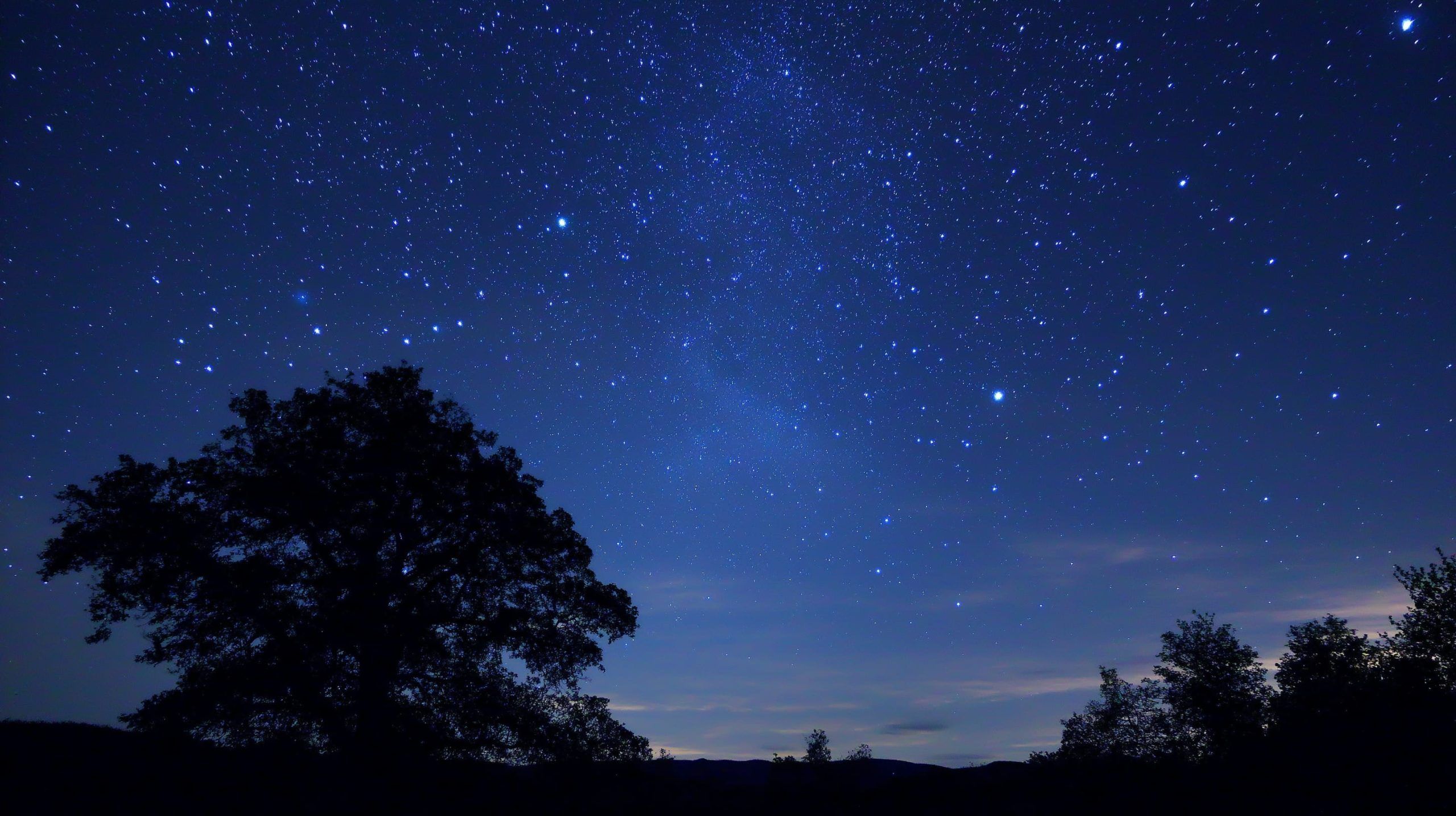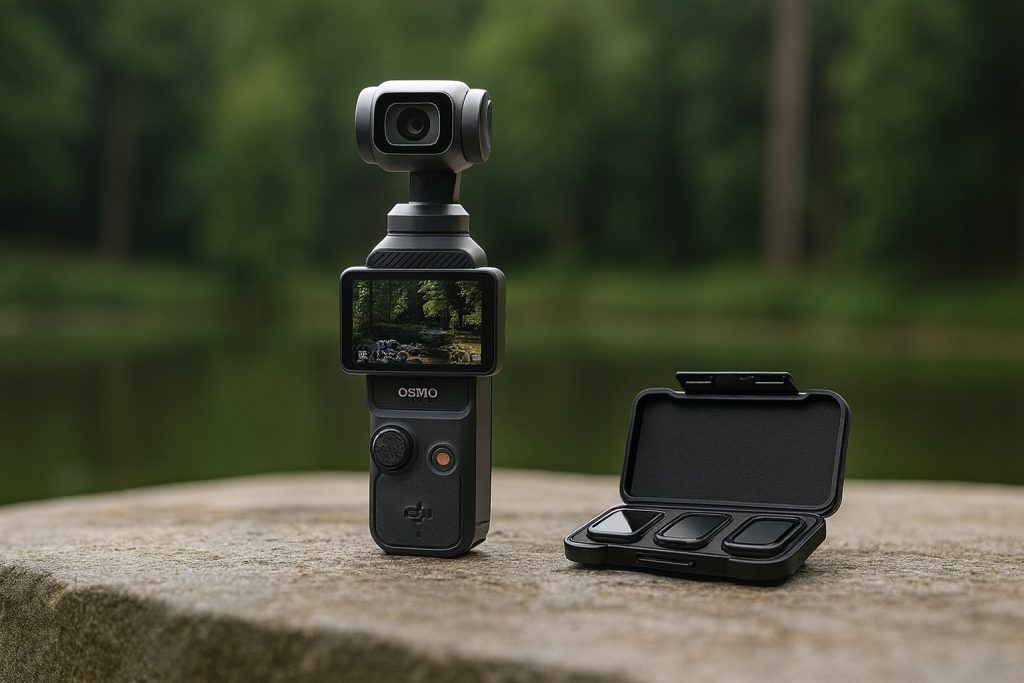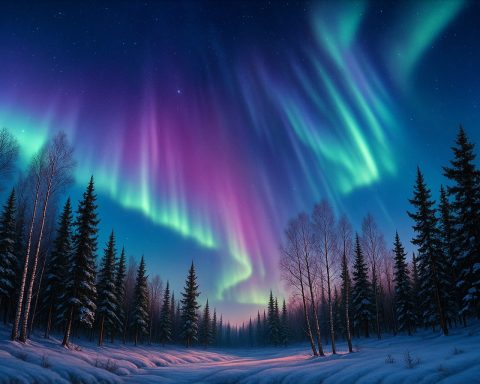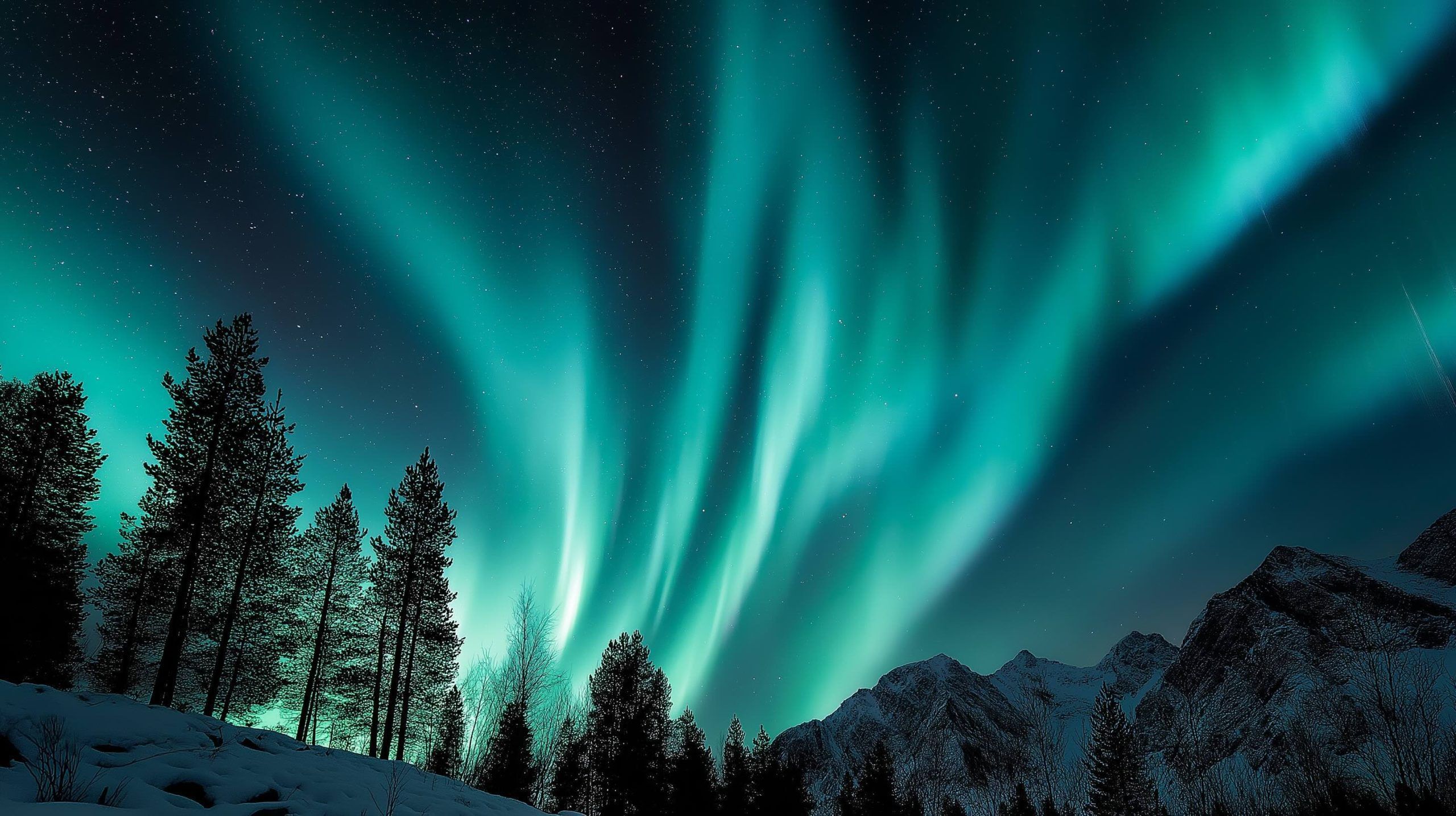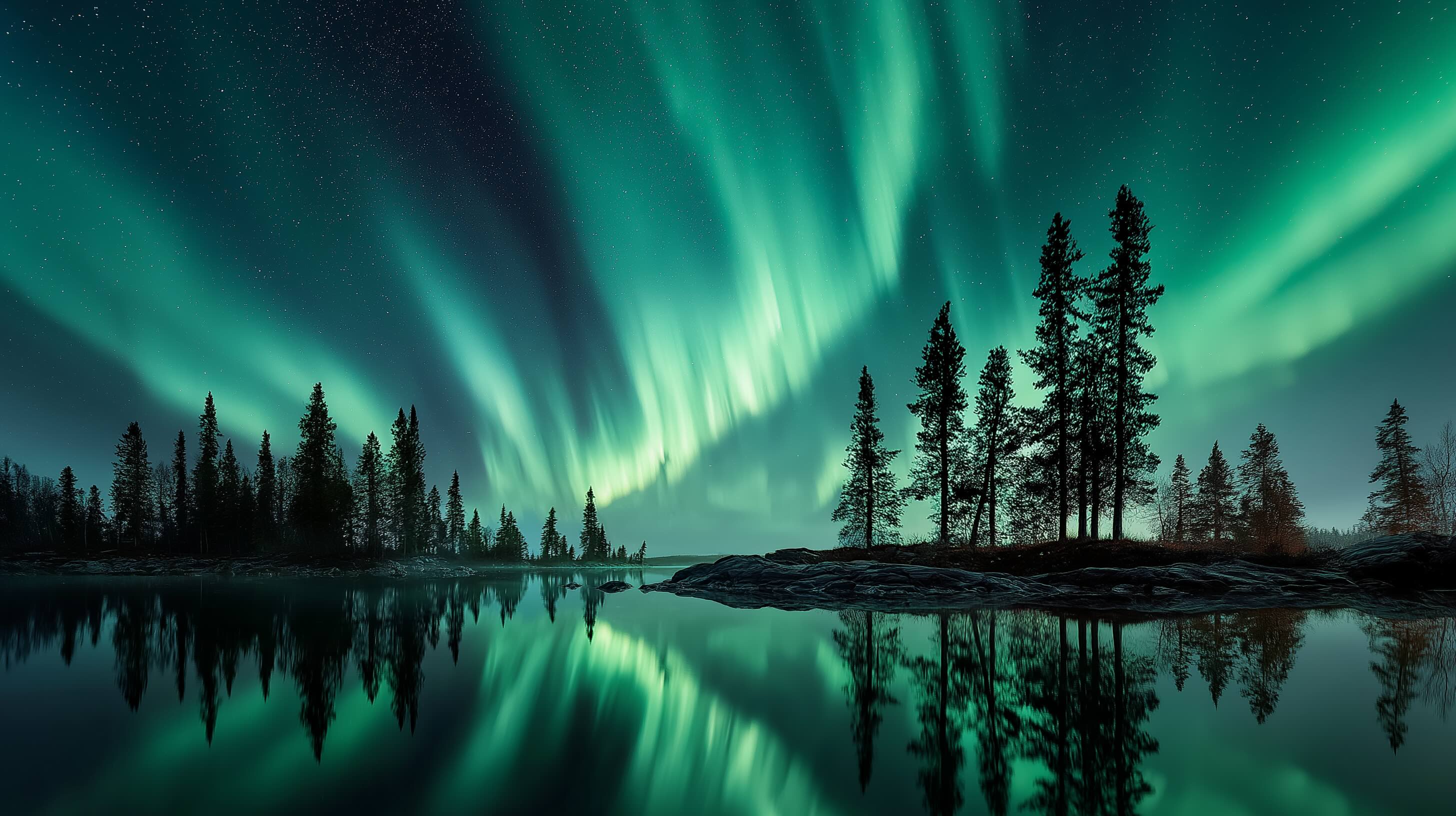- Delta Aquariids peak on the nights of July 30–31 with rates up to 15–20 meteors per hour in the Southern Hemisphere and fewer than 10 per hour from mid-northern latitudes, under a slender 25–30% lit Moon that sets early.
- Alpha Capricornids peak around July 30–31, averaging 2–5 meteors per hour, but delivering slow, bright fireballs that can rival Venus in brightness.
- With both showers active and a few early Perseids, observers under dark skies could see several dozen meteors per hour during July 30–Aug 1.
- On July 31 the Moon is a 30% illuminated crescent near Spica in Virgo, with occultations possible for far-southern observers around 06:00 UTC, and by Aug 1 the Moon reaches first quarter and moves into Libra.
- Aug 1 also marks the Moon’s apogee at about 404,160 km from Earth, subtly affecting its apparent size.
- The predawn sky on July 31–Aug 1 features a five-planet parade: Venus around magnitude -4, Jupiter around -2, Saturn about +0.6, Neptune around +7.8, and Uranus around +5.7, with Mercury absent due to its inferior conjunction on Aug 1.
- Jupiter and Venus sit about 12° apart on Aug 1, still closing toward a near-dawn conjunction later in August (the Venus–Jupiter close pairing is expected around Aug 12).
- NOAA/EarthSky forecast suggests unsettled to active geomagnetic conditions through July 31 with a chance of G1 minor storms and Kp values around 4–5 at high latitudes, offering potential aurora sightings there.
- The International Space Station will have visible evening passes around July 27–31, including Los Angeles on July 28 at 8:43 PM and 10:17 PM PT and New York City on July 27 at 10:11 PM and July 28 at 9:22 PM, travelling about 28,000 km/h at ~400 km altitude.
- A SpaceX Starlink launch from Vandenberg is scheduled for July 31 at 16:25 UTC and may produce a visible train in the following evenings; separately, NASA/SpaceX Crew-11 is set for July 31 at 12:09 PM EDT from Kennedy Space Center with four astronauts aboard Endeavour, rendezvousing with the ISS about a day later.
Meteor Shower Double Feature: Delta Aquariids and Alpha Capricornids
Late July brings a cosmic double feature as two meteor showers peak back-to-back. The Southern Delta Aquariids and Alpha Capricornids overlap in activity, offering skywatchers an unusual treat. “Near the peak on July 31, if the radiant were overhead it would produce about 25 meteors per hour… Watch for maybe a dozen meteors per hour,” advises Astronomy Magazine [1]. In practice, with both showers combined (plus a few early Perseid meteors beginning to trickle in), observers under dark skies might see several dozen shooting stars per hour during the late nights of July 30, 31 and August 1 [2]. Crucially, the Moon is cooperative – a slender waxing crescent (only ~25–30% lit) sets early, leaving dark skies for meteor viewing [3] [4].
- Southern Delta Aquariids – Medium-strength shower. Peak: night of July 30–31 (best after midnight) [5] [6]. Rate: Up to ~15–20 meteors/hour under ideal conditions in the Southern Hemisphere, but fewer than ~10/hour from mid-northern latitudes [7]. NASA emphasizes that this shower “sprinkles” more than sparkles – its meteors are mostly faint, fast streaks that are easily missed by the naked eye [8] [9]. The radiant (in Aquarius) climbs highest for observers south of the equator, so places like Australia, South Africa, and southern U.S. states will see more meteors than far-northern locales [10] [11]. Still, even northern observers can catch a few, especially in the hour before dawn when Aquarius rises higher (e.g. ~25° above the horizon in the southern sky for North America) [12]. About 5–10% of Delta Aquariid meteors leave persistent trains of ionized gas that linger a second or two [13] – a ghostly glow trailing the meteor’s path.
- Alpha Capricornids – Small but flashy. Peak: around July 30–31 [14]. Rate: Only ~2–5 meteors/hour on average [15]. What this minor shower lacks in quantity it makes up for in quality: the Alpha Caps produce slow, bright fireballs that can rival Venus in brilliance [16]. These fireballs often traverse the sky more leisurely, sometimes leaving lingering tails of light [17]. “Those extra-bright meteors are truly eye-catching,” notes Discover Magazine [18]. The shower’s radiant in Capricornus is near the southern horizon for much of the Northern Hemisphere, so like the Aquariids it’s best viewed from lower latitudes [19]. Even a handful of these Capricornid fireballs can make your night – don’t be surprised if you see a dazzling, slow streak that lights up the sky.
Viewing Tips: Find a dark location away from city lights – this significantly boosts the number of meteors you’ll see [20]. Plan to watch during the late-night to pre-dawn hours, when your local sky is at its darkest and the meteor radiants are highest. Lie back and let your eyes adapt to the dark (~20+ minutes). No telescopes or binoculars are needed – use your naked eyes to scan as wide an area as possible [21]. The meteors can appear anywhere in the sky, though Aquariid meteors will seem to fly from the south (Aquarius), and Capricornids from the southeast (Capricornus). Pro tip: bring a reclining chair or blanket, and be patient – meteors often come in spurts with lulls in between. As one meteor expert put it, both showers are “very nice, classic meteor showers” – not blockbuster storms, but a delightful sprinkling of shooting stars on a summer night [22]. With two showers active together, “the meteors do add up” [23], creating a richer display than either would alone. And keep an eye out toward the northeast after midnight – you might catch an early Perseid fireball or two joining the show [24], as the famous Perseid shower ramps up (it peaks in mid-August).
Moon & Stars: Crescent Moon Meets Spica
Each night’s Moon can act as a guidepost in the sky. On July 31, a delicate waxing crescent Moon (~30% illuminated) shines at nightfall in the constellation Virgo. Look toward the southwest after sunset: the crescent Moon will be just a few degrees from Spica, Virgo’s brightest star [25]. In fact, for a lucky few observers in far-southern locales (parts of Australia, the Kerguelen Islands, and Antarctica), the Moon will occult Spica – actually cover the star for a short time around 06:00 UTC on July 31 [26]. Most of us won’t see the occultation, but you will notice the Moon and Spica making a pretty pair – on July 30 the Moon sat to Spica’s right, and by July 31 it has moved to Spica’s left [27]. The Moon’s earth-lit night side (earthshine) may also be visible as an ashen glow on the dark portion. By August 1 evening, the Moon has waxed to first-quarter phase (half-lit) [28] and moved eastward into Libra, pulling away from Spica. While not near any very bright stars that night, the half-moon will be high in the sky at dusk and sets around midnight [29]. (Fun fact: the Moon also reaches apogee – its farthest distance from Earth – on Aug 1, at ~404,160 km away [30]. The Moon appears slightly smaller and dimmer at apogee, though this is hard to notice with the naked eye.)
Even beyond the Moon, the summer stars put on a great show. By late evening, the Milky Way forms a magnificent arc across the sky (especially visible from dark-sky locations). In the mid-northern latitudes around 10–11 PM, look for the cloudy band of the Milky Way passing through constellations like Cygnus (the Swan) overhead, Aquila (the Eagle), and down to Sagittarius in the south – this is the summer Milky Way’s brightest section [31]. In the Southern Hemisphere’s winter skies, the Milky Way is even more directly overhead, sprawling from Scorpius and Southern Cross high in the sky down toward the southern horizon. Take a moment between meteors to enjoy the stellar backdrop: the Summer Triangle (stars Vega, Altair, Deneb) is high up, reddish Antares twinkles in Scorpius, and the Teapot of Sagittarius pours out the Milky Way’s steam. Summer nights are rich with such sights, even when meteors or auroras aren’t active [32].
Planets on Parade: Five-Planet Dawn Lineup
The morning sky is a must-see on these dates. In the predawn hours of July 31 and Aug 1, five planets line up across the eastern and southern sky. Early risers (or meteor watchers staying out until dawn) can catch a planetary parade featuring Venus, Jupiter, Saturn, along with the distant ice giants Neptune and Uranus:
- Venus – Blazing at magnitude –4, Venus is the brilliant “Morning Star” rising about 1 hour before sunrise in the east-northeast. It’s the brightest point of light in the sky. Venus is moving closer to the Sun’s line of sight each day (it was at greatest brilliancy earlier in the month), but still stands about 15° high an hour before dawn on July 31 [33]. Note: Venus will meet Jupiter in a spectacular close conjunction in mid-August, so it’s on its way to that meetup [34].
- Jupiter – The King of Planets is just making its return to view, creeping up from the glow of sunrise [35]. By July 31/Aug 1, Jupiter is low in the east around the start of dawn (~5°–10° above horizon one hour before sunrise, depending on latitude). It brightens to mag –2 and gets a bit higher each morning. Jupiter and Venus are drawing closer together each day – they will be about 12° apart on Aug 1, heading to a very close pairing on Aug 12 [36]. Try to spot Jupiter below Venus in the twilight; binoculars may help if the sky is bright. This duo of the brightest planets is already eye-catching and will only get better in the coming days [37].
- Saturn – Rising earlier in the night, Saturn is well up in the south-southwest by dawn. It shines at ~mag +0.6 in Aquarius (near the Aquarius-Capricornus border) and is visible all night long by late July. Saturn is on approach to its own opposition (which occurs in late September 2025 [38]), so it’s getting brighter and bigger in telescopes. In the predawn hours (~2–4 AM local time), Saturn is high in the southwestern sky for Northern Hemisphere observers (nearly overhead if you’re in the Southern Hemisphere) [39]. Added bonus: Neptune is very close to Saturn in the sky this month – only a few Moon-widths away [40]. Neptune at mag ~7.8 is not visible to the naked eye, but if you have a telescope, you can find the faint bluish “dot” just a couple degrees from Saturn during these dates [41]. (A sky chart or app will help pinpoint Neptune’s exact position relative to Saturn.)
- Uranus – Higher up in the east, Uranus (mag ~5.7) lies in Aries, not far from Venus’s position. It’s technically at the edge of naked-eye visibility under excellent dark skies, but most people will need binoculars or a telescope to see Uranus’s tiny greenish disk. On Aug 1, Uranus is roughly 10° from Venus in the sky [42]. Venus’s presence can guide you – Uranus is nearby, though you’ll likely only see it with optical aid. (If you scan around Venus with binoculars, you might spot Uranus as a dim star-like point.)
This multi-planet lineup stretches from the east (Jupiter & Venus low) to southeast (Uranus higher) to south (Saturn, with Neptune near it) in the pre-dawn darkness [43]. Around 5:00–5:30 AM local time (varying by location), you can see Jupiter, then brilliant Venus above it, then fainter Uranus (with aid) further up, and Saturn toward the south. “You can see the upward arc of Jupiter, Venus, Uranus, Saturn, and Neptune from the east to the southern sky in the early morning hours of July 30 and 31,” notes NASA’s What’s Up sky guide [44]. This is essentially a five-planet arc across the sky – a preview of even grander alignments in August. (Mark your calendar: on August 12, Venus and Jupiter will pass within half a degree of each other at dawn – the same morning the Perseid meteors peak [45]. And in the first week of August, Mercury will emerge to join the morning planets too.)
Mercury is notably absent right now – it’s invisible at the turn of the month because it reaches inferior conjunction (passing between Earth and the Sun) on August 1 [46]. Essentially, Mercury is lost in the Sun’s glare. It will pop back up on the morning side later in August. For now, focus on the other bright planets adorning the dawn.
Aurora Watch: Northern (and Southern) Lights Chances
High-latitude skywatchers, take note: there’s a glimmer of aurora activity in the forecast. In late July 2025, the Sun has been active, with many minor flares and a couple of Earth-facing coronal holes sending gusts of solar wind our way [47] [48]. According to NOAA’s Space Weather Prediction Center and experts at EarthSky, a high-speed solar wind stream was expected to reach Earth around July 30–31 [49] [50]. This solar wind, emanating from a coronal hole in the Sun’s northern hemisphere, could stir up unsettled geomagnetic conditions and even a brief G1-class geomagnetic storm at high latitudes [51] [52].
- Geomagnetic Forecast: NOAA forecast “unsettled to active” magnetic field conditions through July 31 as the solar wind stream arrives, with a slight chance of periods reaching G1 (Minor storm) level [53]. In practical terms, that means the Kp index (a measure of geomagnetic activity) might spike to around 4 or 5 at times – enough for auroras in high-latitude regions, but not necessarily a major storm. A second, smaller coronal hole could give another impulse by late on Aug 1, though its effects were expected to be minor [54].
- Aurora Visibility: Under a G1 (Minor) storm, auroras are typically confined to high latitudes. Areas like Canada, Alaska, Northern Europe (Scandinavia, Scotland), and the far southern tip of New Zealand or Tasmania (for the aurora australis) have the best shot at seeing a gentle auroral glow [55] [56]. Don’t expect the sky to explode in technicolor; more likely is a subtle greenish or reddish hue low on the horizon, or diffuse pulses of light. Spaceweather forecasters gave roughly a 15–25% chance of active auroras at high latitudes on July 30-31 [57] – far from guaranteed, but worth keeping an eye on if you’re in the auroral zones.
If you live in a northern state (USA) or central Europe at ~50°N+, you might want to check real-time aurora alerts on these nights. Even a minor uptick could “light up the night sky” faintly at the horizon [58]. As always, dark, clear skies are critical – you won’t see auroras if clouds are blocking the view. By the wee hours of Aug 1, the Moon sets before the Sun is up, so moonlight won’t interfere. The main question is whether Earth’s magnetic field gets that anticipated solar wind jolt. Bottom line: there’s no promise of a big aurora, but the Northern Lights might make a cameo appearance for those in the right place. If you’re at high latitude, keep watch (or monitor aurora apps) just in case a soft green glow dances on your horizon [59]. And southern hemisphere readers at high latitudes – yes, this applies to you too (looking at you, southern Australia, NZ, South America)! Your nights are long this time of year, providing a good window if auroras do occur.
Bonus: Satellite Sightings – ISS Flyovers & Starlink Trains
Not all the night’s moving lights are natural – humanity has some “artificial stars” up there too. The brightest of these is the International Space Station (ISS), which is making a series of bright evening passes over many populated areas in late July. Around July 27–31, the ISS’s orbit was oriented such that it was visible multiple times per night from mid-northern latitudes [60]. Skywatchers across much of the United States and similar latitudes in Europe and Asia enjoyed prime ISS viewing opportunities [61]. For example, observers in Los Angeles caught the ISS twice on July 28 (at 8:43 PM and 10:17 PM PT), and New Yorkers saw it around 10:11 PM on July 27 and again at 9:22 PM on July 28 [62]. More flyovers continued on subsequent nights. The station typically appears within a couple hours after sunset or before sunrise, when its giant solar panels catch the Sun’s rays against the dark sky [63]. The ISS looks like a bright, steady moving point of light – often outshining most stars at magnitude – and it glides across the sky in a few minutes. Unlike aircraft, it has no blinking lights and no color; it shines with a steady white glow as it silently traverses ~400 km above Earth [64]. If a pass is predicted for your location, go out at the appointed time and look in the specified direction – the ISS will suddenly appear, then cruise along an arc and fade out as it enters Earth’s shadow. It’s quite a sight to see an object the size of a football field hurtling by overhead at 28,000 km/h. To find when and where to look, use NASA’s “Spot the Station” tool which gives local flyby times [65]. Many astronomy enthusiasts set phone alerts for ISS passes – it never gets old to watch this human outpost in orbit soar by, knowing that astronauts aboard experience a sunset every 45 minutes!
In addition to the ISS, you might notice other satellites slowly drifting among the stars. Dozens of faint satellites are overhead each night; most are much dimmer than the ISS, but occasionally you’ll see one flare or glint as it catches the Sun just right. Starlink satellites, launched by SpaceX, have become famous (or infamous) for appearing as a “train” of bright dots crossing the sky. These are most noticeable in the days shortly after a launch, before the satellites disperse. None were specifically timed to pass on July 30–31 in a big train over major cities [66], but it’s worth knowing: if you see a line of evenly spaced lights moving in formation, you’ve likely spotted a Starlink deployment [67]. In fact, SpaceX has a launch scheduled on July 31 carrying another batch of Starlink satellites to orbit [68]. The Falcon 9 rocket is set to lift off from Vandenberg Space Force Base in California at 16:25 UTC (9:25 AM PDT) on July 31 [69]. While that daytime launch won’t be visible to skywatchers at night, those newly launched Starlink minisats could become visible in the evening skies of the following days, especially for observers at mid-northern latitudes. Keep an eye out post-sunset: you might catch a Starlink train creating a brief, jaw-dropping line of lights. (They typically look like a string of pearls moving in unison, then gradually spread out over time.)
Speaking of launches, July 31 itself marks a major rocket event: NASA and SpaceX’s Crew-11 mission is scheduled for launch to the ISS that day [70]. A Falcon 9 rocket will blast off from Kennedy Space Center in Florida at 12:09 PM EDT carrying four astronauts (from NASA, JAXA, and Roscosmos) in the Crew Dragon Endeavour [71]. If all goes to plan, Crew-11 will rendezvous with the ISS about a day later. While a midday launch isn’t something you’ll see in the night sky (except perhaps residents of Florida who might glimpse the rocket’s ascent), it’s exciting to know that by nightfall on July 31 the crew will be orbiting Earth on their way to the space station. (If weather or other factors delay the launch, Aug 1 is a backup date [72].) Additionally, on the horizon for August 2 is a Rocket Lab Electron launch from Virginia, USA [73], showing that the spaceflight calendar remains busy. For skywatchers, rocket launches can produce stunning fuel plume displays if they occur around dawn or dusk – but Crew-11’s and the Starlink launches are in daylight, so no illuminated twilight plume this time.
Night Sky Weather Outlook (Viewing Conditions)
Having the celestial lineup is great – but only if you can see it. Here’s a brief weather outlook for key regions on July 31 and Aug 1 nights:
- North America: Many parts of the U.S. are in luck with clear skies. According to FOX Weather, the “rest of the country has a mostly clear sky for the meteor shower” aside from a few trouble spots [74]. The Upper Midwest and some of the Southeast/Gulf Coast were forecast to be shrouded in clouds (thanks to lingering storms and humidity) [75]. For example, areas around the Great Lakes and Deep South might have had overcast or stormy nights, hampering viewing. In contrast, much of the West, Southwest, and Northeast enjoyed mostly clear conditions [76]. (The Southwest’s monsoon season can introduce clouds and thunderstorms, but late July 2025’s worst seems to be focused more eastward.) Canada: Western Canada and the Prairies often have clear summer nights, whereas Eastern Canada might see passing clouds or rain showers; check local forecasts. Also note, smoke from wildfires (if present) can reduce sky transparency even if skies are “clear,” so that’s an X-factor in parts of western North America during summer.
- Europe:Sunset comes late in mid-summer Europe, especially at higher latitudes – but by 11 PM–midnight local time, it gets decently dark in most areas (except the far north, which still experiences twilight or midnight sun). Southern Europe (Spain, Mediterranean countries) often enjoys clear, warm nights under stable summer high-pressure systems – ideal for stargazing. Central Europe (France, Germany, Poland etc.) can be a mixed bag: warm days can lead to some evening clouds or thunderstorms, but there are also large clear patches. Northern Europe (UK, Scandinavia) might have more variable conditions – the UK often has partly cloudy skies in summer, and Scandinavia sees fast-moving weather systems. Indeed, July’s end in the UK is historically hit-or-miss; skygazers might recall that “July’s skies [in the UK] can be compromised by what plagued June” (often meaning cloud or haze) [77]. In summary, many European observers will need to dodge some clouds, but if you get a clear window, the late July sky spectacle will be visible. Always check your local meteorological service – weather can vary significantly over short distances.
- Asia: It’s monsoon season across large swaths of Asia. South Asia (India, Pakistan, Nepal) and Southeast Asia (Thailand, Malaysia, Singapore, Philippines) typically face heavy cloud cover and frequent rains in late July – a tough scenario for skywatching. (For instance, Singapore’s stargazers were advised the meteor showers “will decorate the night sky if weather conditions allow,” a big if due to monsoonal clouds.) Many nights are overcast or hazy in these regions now. East Asia: China’s weather varies by region – northern China (Beijing latitude) can have clear summer nights with occasional storms, while southern China is in rainy season. Japan and Korea often have hot, humid late-July weather with intermittent clear spells between showers. West Asia (Middle East): Contrastingly, countries like Saudi Arabia, UAE, etc. have clear skies and dry conditions in summer (albeit very hot) – great for night viewing if you can stand the warmth. Central Asia (Kazakhstan, etc.) also tends to be clear and dry in summer nights.
- Oceania & Southern Hemisphere:Australia and New Zealand are in winter now. Southern Australia (e.g. around Sydney, Perth) often has clear, cool nights in late July, with some frontal systems bringing clouds periodically. 2025’s winter has seen a mix of clear nights and some rain in various parts, but generally many Aussies and Kiwis should get crisp, clear skies at least on one of these two nights – perfect for the meteor double-feature. South Africa and southern South America (Chile, Argentina) also have dry winter conditions – often very clear nights, especially inland. These regions, being closer to the meteor radiants, actually have an advantage in seeing the Delta Aquariids/Capricornids. Tropical Southern Hemisphere (Brazil northwards, Indonesia, etc.) may contend with their dry vs. rainy seasons depending on locale – for example, much of Brazil is dry this time of year (good for stargazing), whereas Indonesia is often dry around August but some areas get clouds.
In all cases, the universal advice is to check your local weather forecast before heading out to observe. Even a thin layer of high cloud or haze can hide faint meteors or auroras. If skies aren’t cooperative on July 31 or Aug 1, don’t despair – the meteors will continue (albeit at slightly lower rates) for nights before and after, and planets will be around for weeks. Flexibility and patience can pay off. As one meteor-watching guide put it: “Clear, dark skies free of light pollution will improve your chances” of catching these celestial events [78] – so plan accordingly to maximize your experience.
Sources: This report draws on expert guidance from NASA, NOAA, and leading astronomy organizations. NASA’s skywatching team provided meteor shower facts and planetary line-up details [79] [80], while the American Meteor Society and Astronomy Magazine offered meteor rates and viewing tips [81] [82]. EarthSky and SpaceWeather experts contributed the aurora forecast amid recent solar activity [83]. Quotes from astronomers (e.g. Thaddeus LaCoursiere of the Bell Museum and Nick Moskovitz of Lowell Observatory) via an AP report highlight the meteor showers’ character [84] [85]. Major space agencies and media (NASA, SpaceX, Spaceflight Now) provided updates on the Crew-11 launch and Starlink deployments [86] [87]. Regional weather outlooks were informed by forecasts from FOX Weather and others [88]. For further details and real-time updates, check resources like NASA’s “What’s Up” newsletter, SpaceWeather.com, your local meteorological service, and astronomy outlets such as Sky & Telescope or Sky at Night Magazine. Clear skies and happy skywatching! [89] [90]
References
1. ts2.tech, 2. ts2.tech, 3. ts2.tech, 4. www.fox35orlando.com, 5. www.nasa.gov, 6. www.nasa.gov, 7. www.nasa.gov, 8. www.nasa.gov, 9. www.nasa.gov, 10. www.nasa.gov, 11. ts2.tech, 12. www.astronomy.com, 13. ts2.tech, 14. www.amsmeteors.org, 15. www.amsmeteors.org, 16. ts2.tech, 17. ts2.tech, 18. ts2.tech, 19. ts2.tech, 20. ts2.tech, 21. ts2.tech, 22. phys.org, 23. phys.org, 24. ts2.tech, 25. earthsky.org, 26. earthsky.org, 27. earthsky.org, 28. earthsky.org, 29. earthsky.org, 30. earthsky.org, 31. ts2.tech, 32. ts2.tech, 33. www.skyatnightmagazine.com, 34. earthsky.org, 35. earthsky.org, 36. earthsky.org, 37. earthsky.org, 38. www.rmg.co.uk, 39. earthsky.org, 40. www.astronomy.com, 41. www.astronomy.com, 42. whenthecurveslineup.com, 43. www.travelandleisure.com, 44. www.travelandleisure.com, 45. earthsky.org, 46. earthsky.org, 47. ts2.tech, 48. ts2.tech, 49. ts2.tech, 50. ts2.tech, 51. ts2.tech, 52. earthsky.org, 53. earthsky.org, 54. earthsky.org, 55. ts2.tech, 56. ts2.tech, 57. ts2.tech, 58. ts2.tech, 59. ts2.tech, 60. ts2.tech, 61. ts2.tech, 62. ts2.tech, 63. ts2.tech, 64. ts2.tech, 65. ts2.tech, 66. ts2.tech, 67. ts2.tech, 68. nextspaceflight.com, 69. nextspaceflight.com, 70. spaceflightnow.com, 71. spaceflightnow.com, 72. spaceflightnow.com, 73. nextspaceflight.com, 74. www.fox35orlando.com, 75. www.fox35orlando.com, 76. www.fox35orlando.com, 77. www.skyatnightmagazine.com, 78. ts2.tech, 79. www.nasa.gov, 80. www.travelandleisure.com, 81. www.nasa.gov, 82. ts2.tech, 83. earthsky.org, 84. phys.org, 85. phys.org, 86. spaceflightnow.com, 87. nextspaceflight.com, 88. www.fox35orlando.com, 89. www.fox35orlando.com, 90. www.nasa.gov
